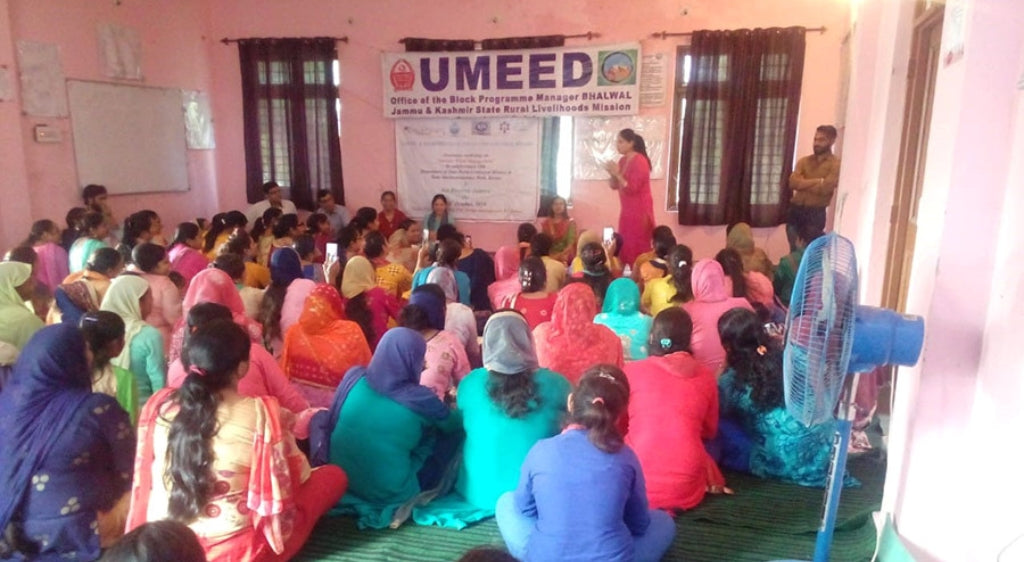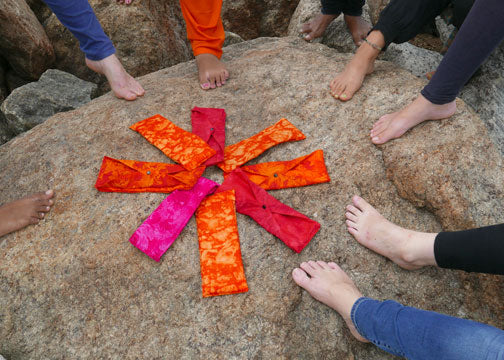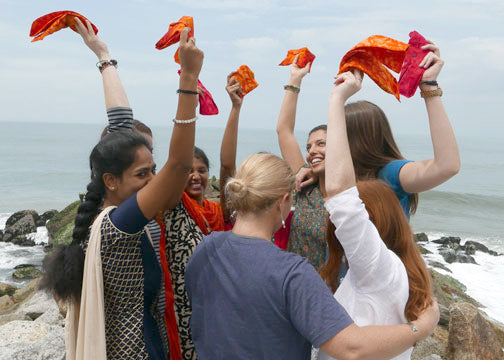
Sustainable Menstrual Hygiene in Rural India

Kajal shifts from disposable to reusable pads. Kajal Kumari, 19, lives in the village of Ratanpur in Bhojpur district of Bihar. Her father is no more and she lives with her mother, two sisters and grandmother in this village in one of the most backward districts of our nation. Unlike many other girls of her age in her village though, Kajal is enrolled in college. Many girls here stop their studies after Class VIII or X. Kajal’s mother however, encourages her to study. She wishes to obtain a job after she completes her education so that she can support her family. Kajal is a pioneer in another respect as well. Earlier this year, she made the shift from using disposable pads to cloth reusable pads.
No recurring expenses for reusable pads
“Many girls in our community use disposable sanitary pads and spend about ₹ 40-50 buying these every month. I am happy that I have no recurring expense now,” Kajal says.
Amrita SeRve outreach program distributed Saukhyam Reusable Pads
Kajal received her set of pads back in April 2020 as part of Amrita SeRVe’s community outreach program. Amrita SeRVe is the village adoption program of the Mata Amritanandamayi Math. Women groups make and distribute the award-wining Saukhyam Reusable Pads from banana fiber and cotton cloth.
Saukhyam Reusable Pads supports Swacch Bharat Programe initiated by Hon. PM Modi Ji
All over India, a quiet movement is taking place to support sustainable menstruation. As the country strives to achieve the goals of Swacch Bharat, there is a growing understanding of the problems caused by little-discussed categories of waste such as menstrual pads. If all women of reproductive age in India used disposable sanitary pads, an estimated 58,50,00,00,000 or a whopping 5850 crore soiled pads would be discarded annually.
Disposable pads causes pollution for 100s of years
Tomorrow I would be gone, my children and grand-children too, and their grand-children as well, but the disposable pads I would have used and discarded today would be around on our planet for hundreds of years causing pollution. This is prompted me to make the shift,” says Kajal.
Trees are cut to make cellulose fiber
Many making the switch are not just motivated by considerations of waste management. Trees are cut to make cellulose fiber which is the absorbent material in most disposable pads. This cellulose fiber is bleached to obtain the white color and the bleaching process leaves trace amounts of dioxins on pads. Dioxins are endocrine disruptors. Disposable pads cause not just environmental problems but are also detrimental to our health.
Kajal made the right choice
Kajal learned about the harmful effects of disposable sanitary pads through a worksh1op organized in her village by the Amrita SeRVe team. One disposable pad is 90% plastic. There is no safe way to dispose used pads. If burnt in an incinerator or in the open, the pads lead to the emission of dangerous furans and dioxins. If thrown away, the non-biodegradable pads continue to pollute for 500-800 years. And they cost money. Over one’s menstruating lifetime, one would spend approximately ₹ 50 monthly or ₹ 600 annually and perhaps over ₹ 24000 in total on a product that is not good for the planet or for one’s health.
No recurring costs with Saukhyam Pads
The recurring cost may be the primary factor that is driving young girls such as Kajal to making the switch. But it is also the ease of use that is helping. “It takes less than five minutes to wash these pads. They do not stain and I can easily hang them up in the open to dry,” says Mausam Kumari who oversees a center to stitch these pads in Ratanpur itself.
“I find these pads more comfortable to use than the disposable sanitary pads I was using earlier,” she adds.
Ratanpur is one of five villages that was adopted by the Mata Amritanandamayi Math in Kerala as part of its Amrita SeRVe (Self Reliant Village) project in 2013. Saukhyam Reusable Pads have been distributed to young girls not only in Ratanpur, but also in the neighboring villages of Tenduni, Ichari, Hadiabad and Moarsiya. All of these villages also have after-school tuition centers and various skill development centers run by different teams of the Mata Amritanandamayi Math and Amrita University.

















